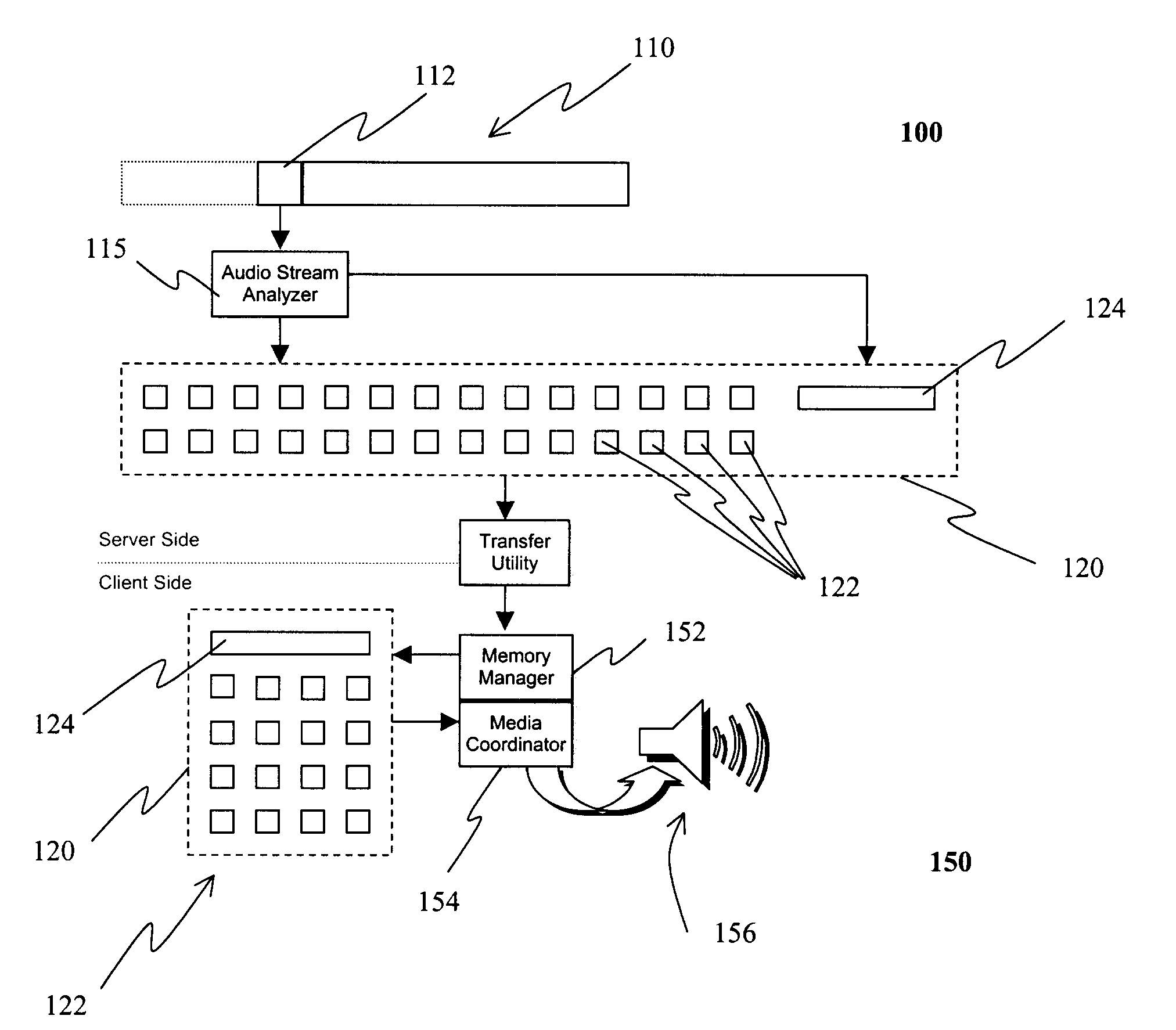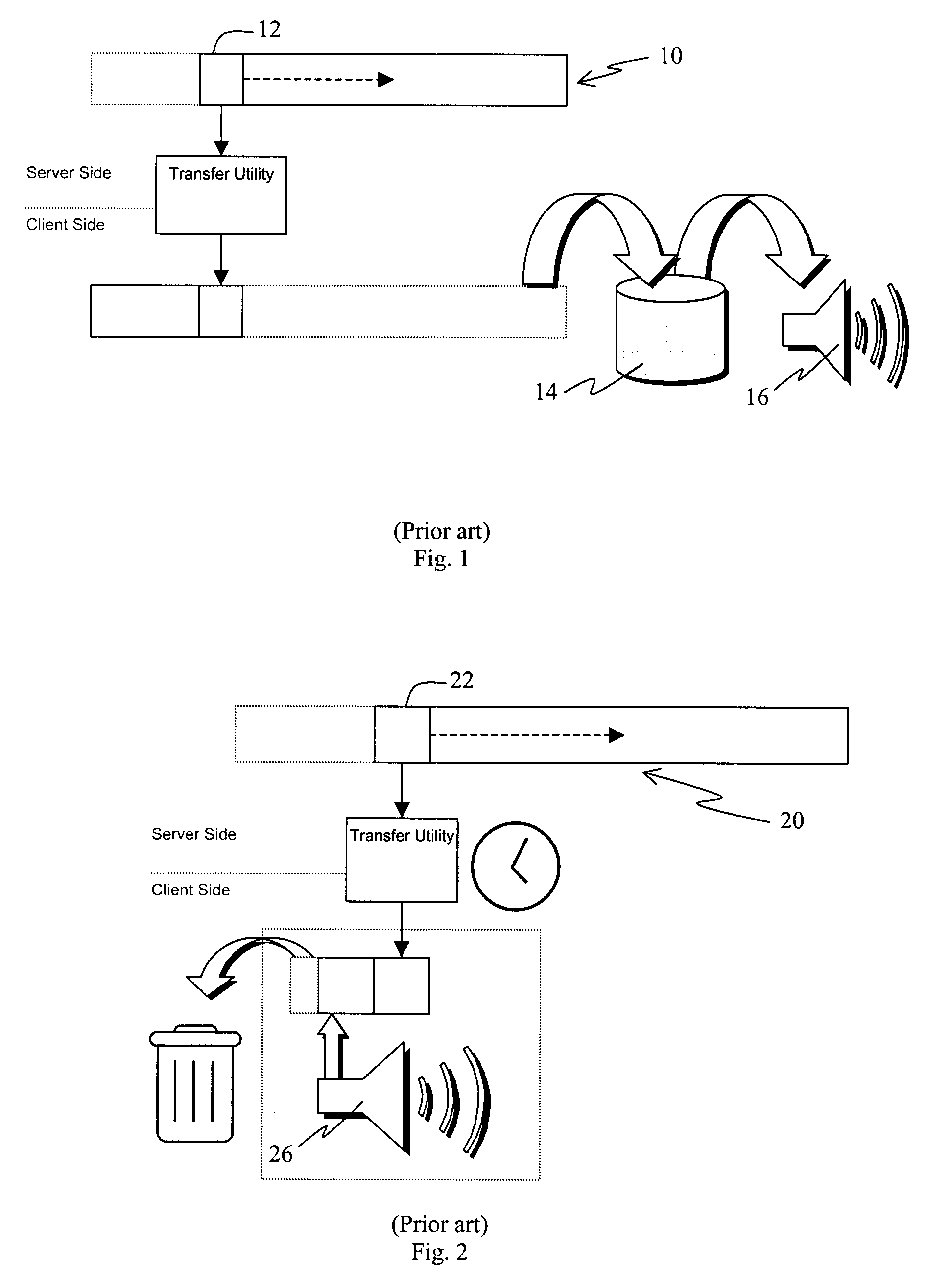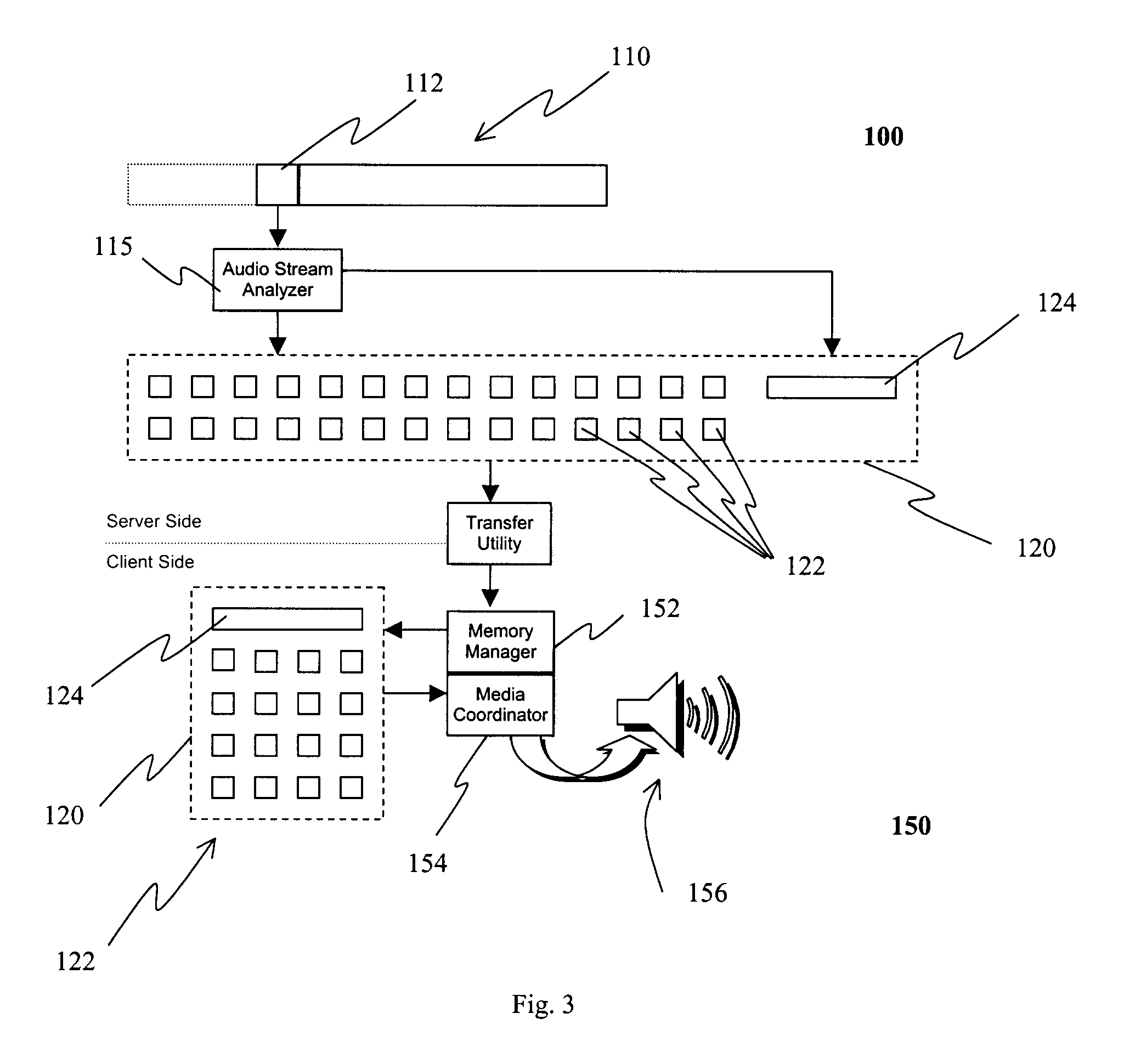Segmentation and Transmission of Audio Streams
a technology of audio streams and segments, applied in the field of segmentation and transmission of audio streams, can solve the problems of large audio streams, such as books and radio shows, presenting a problem for the user community, introducing significant delays, and/or inefficiency,
- Summary
- Abstract
- Description
- Claims
- Application Information
AI Technical Summary
Benefits of technology
Problems solved by technology
Method used
Image
Examples
Embodiment Construction
[0045]Referring to FIG. 3, there is shown a system for transmitting digital audio data in accordance with one embodiment of the instant invention. The system includes a server 100, a client 150, and a network (not shown) for connecting the server 100 and the client 150.
[0046]On the server side 100, an audio stream analyser 115 is provided for analysing large digital audio files 110 frame by frame 112, and for segmenting the large digital audio files 110 into a plurality of small audio files 122. More specifically, the audio stream analyser 115 locates areas of silence or low decibel levels, hereafter referred to as gaps, within the audio stream. When these natural language gaps are found, and after more than a specific amount of content has been processed, that content is written to a small audio file. This parsing process is repeated until the entire audio stream has been split, or segmented, into the plurality of small audio files 122. In general, the size of each small audio file...
PUM
 Login to View More
Login to View More Abstract
Description
Claims
Application Information
 Login to View More
Login to View More - R&D
- Intellectual Property
- Life Sciences
- Materials
- Tech Scout
- Unparalleled Data Quality
- Higher Quality Content
- 60% Fewer Hallucinations
Browse by: Latest US Patents, China's latest patents, Technical Efficacy Thesaurus, Application Domain, Technology Topic, Popular Technical Reports.
© 2025 PatSnap. All rights reserved.Legal|Privacy policy|Modern Slavery Act Transparency Statement|Sitemap|About US| Contact US: help@patsnap.com



